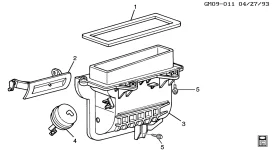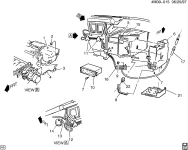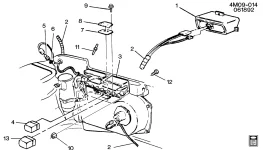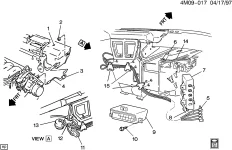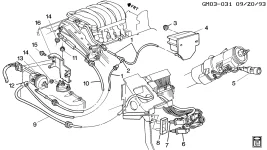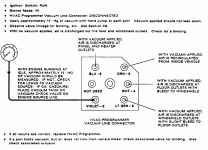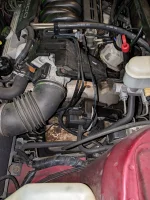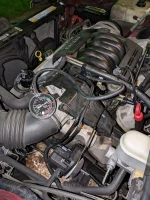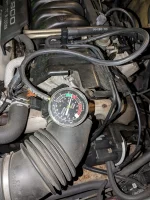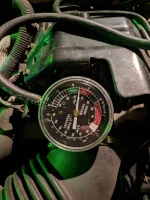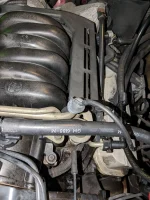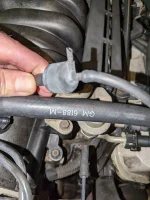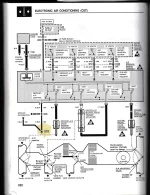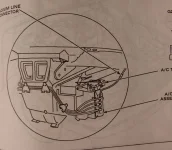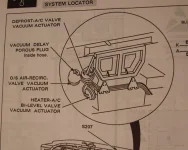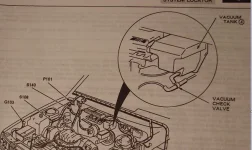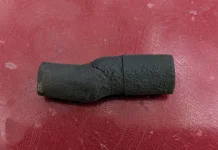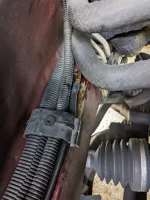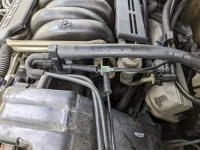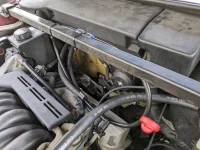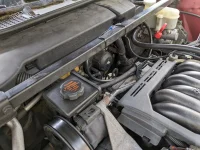Do you have a dual temp control system?
Are you in a hot climate where the plastic chunk in the coupler at the programmer box
softens with age and when it's hot lets the plastic suck closed on the line to the diaphragm
motor for the defroster/dash vents door?
Note the diagram posted in this thread has both the dual system with programmer
and has the single function system with the 4-in-a-line coupler for the lines inside.
And like Z28 says does it occur when the engine is under some load, engine running at
lower speed, and throttle plates open more, which drops the vacuum in the manifold?
How many miles on the engine and how worn is it: is the vacuum on the engine already
low?
The line under the hood at the engine next to the power brake booster is rubber.
That goes to a connector at the passenger side where there is a rubber segment again.
There is a T-valve inline there which lets "vacuum from the motor go to the line" that
goes into the car AND prevents that part of the vacuum system from leaking down
when the engine end of the T-valve drops, due to acceleration. Check the valve for
one-way passing of air. There are rubber parts of the line (at least on my 98 leSabre
they were rubber) and inbetween are a nylon tubing IIRC. You may have to take off the
cover on the right side of the dash that covers the relay center and some of the wiring and
tubing on the passenger side to see all this.
You also should check the vacuum cannister which is under the front fender behind
the headlights. In front of the wheel splash shield. Cracks? If the engine has been
running and just shut off and you remove the line there does the air rush in because
there's a good vacuum on that side of the one-way valve maybe 15-30 seconds
after the engine has been shut off.
If that's okay and the rubber parts aren't cracked, then start thinking about the inside.
Good luck.
Might want to read through this old thread on the problem.
Hey guys, my main problem that made me start the job was no heat. I’ve got heavy condensation buildup on the inside of the windows, a little rust under the dash. Naturally i thought I had a leaky heater core ( I also had water pooling in rear passenger floorboard, and park on a slight incline)...

buickforums.com
And there were many others on buickforums.com along with pontiacbonnevilleclub.com
forums since the cars were just a few years old.


